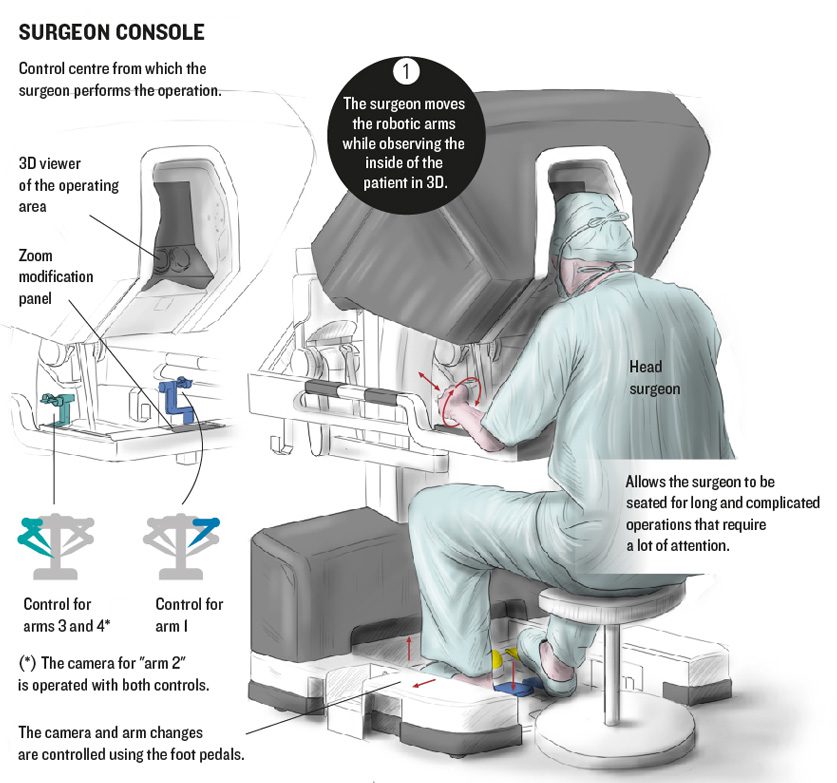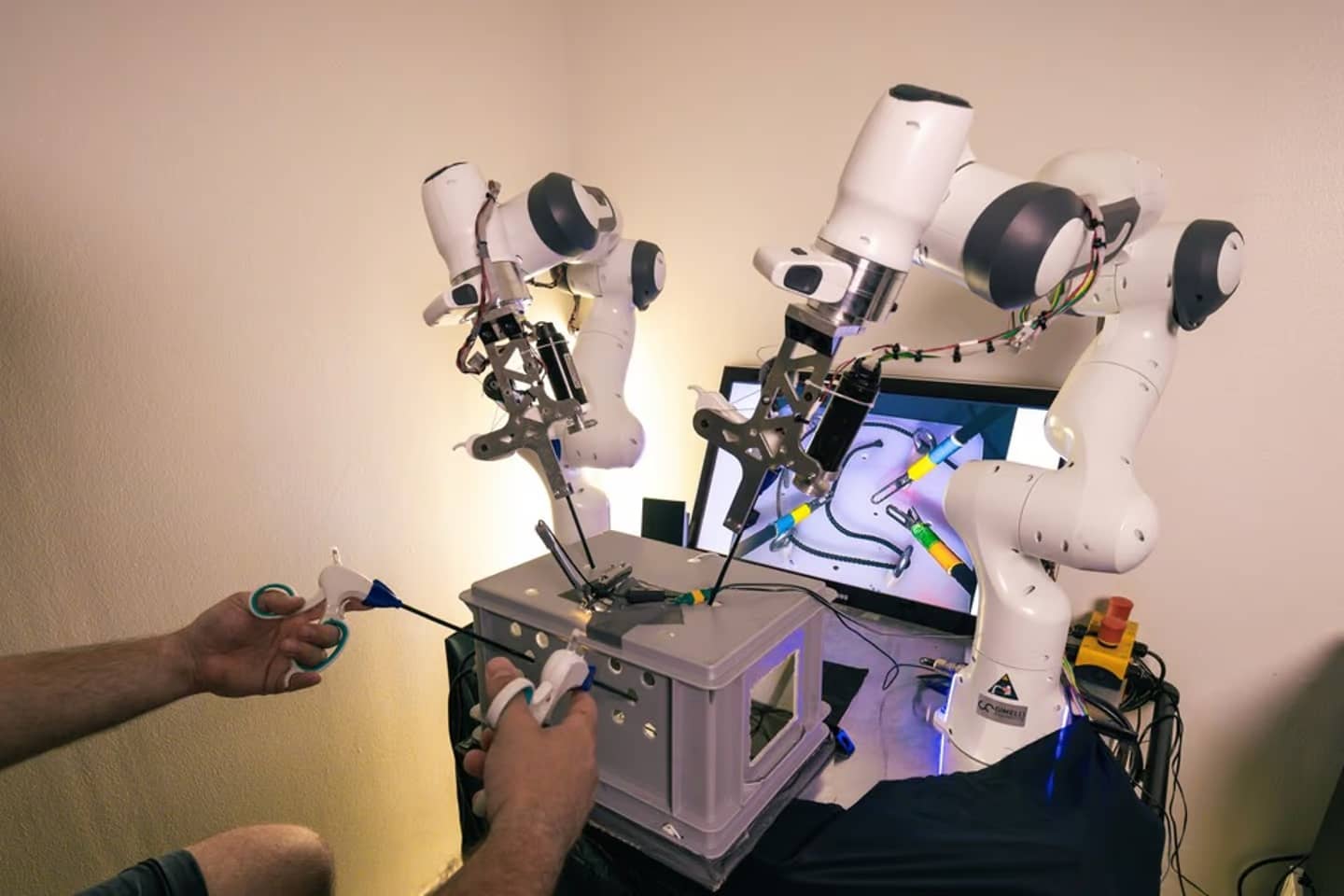Think robotic surgery, for example, the system daVinci X which I told you about some time ago. It's incredible, isn't it? Two arms that move faithfully following the gestures of the surgeon's hands. Yet, there are those who have decided to take a step forward, or rather, two steps: a new experimental system adds two more arms, this time controlled by the user's feet. A real dance in the operating room.
This innovative four-arm laparoscopic system is the work of brilliant scientists of EPFL, the Swiss Research Institute.
Precision dance: how does it work?
Each user's hand holds a controller that resembles the handles of a pair of scissors. Thanks to these tools, it is possible to simultaneously manipulate both main robotic arms, each of which can hold a different primary surgical instrument, such as a scalpel or retractor.
But there's more: the doctor's feet also rest on two pedals. One controls a smaller secondary arm, which holds an endoscopic camera, while the other controls a final arm, equipped with a clamp. In both pedals, actuators provide haptic feedback, guiding the surgeon's actions in the operating room so as not to apply too much force to delicate areas of the patient's body.

Don't you risk confusion?
Maneuvering four tools simultaneously can be tiring and confusing. Because of this, the system is able to predict some of the surgeon's basic actions and guide his movements accordingly.
If a knot is tied in a suture, for example, the endoscope can automatically move to a position that offers the best view, while the clamp can be moved out of the intervention area.
In short, a real dining room assistant. Indeed: two. Mohamed Bouri, head of the REHAssist group at EPFL, explains it well: “Our system opens up new possibilities for performing four-handed laparoscopic procedures, allowing a surgeon to carry out a task that is usually performed by two, sometimes three people.”
The future is an operating room... dancing
Clinical trials of the system are currently underway in Geneva, and the results promise to be exciting. A detailed description of the system, a true concert of precision, technology and human ingenuity, was published in the International Journal of Robotics Research (and I link it here).
Whether you are doctors, engineers or simply passionate about progress, you are all invited to witness this fascinating symphony of medicine. Ready for the final applause?


